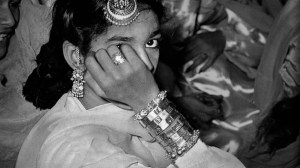The Netflix hit “Heeramandi” depicts the glamorous and powerful life of courtesans in the 1940s, but there is little glamor for sex workers in modern-day Pakistan in the faded red-light district where the series takes place.
The eight-episode show, subtitled in English as “The Diamond Bazaar,” features courtesans in the “royal quarter” of pre-Partition Lahore, once a center of culture and political intrigue.
The dazzling Bollywood-style extravaganza sees women team up with aristocrats, forging powerful alliances and rivalries against the backdrop of India’s struggle for independence from British rule.
But Shagufta, a 65-year-old former sex worker, scoffed at the neighborhood’s abandoned remains.
“There is no such Heera Mandi,” he told AFP, using a pseudonym to protect his identity.
“Now the girls are just exposing their bodies,” Shagufta explained. “There is nothing left in Heera Mandi.”
Also Read: Akasa Air’s Delhi To Mumbai Flight Diverted To Ahmedabad Over Security Alert
Shagufta can trace her family back to seven generations of women who worked as ‘tawaif’ in Heera Mandi and started dancing and prostitution at the age of 12.
While courtesans honed their art in dance and music during the Mughal period, the show exaggerates the opulence and glamor of the British era where it takes place.
“It was never like that,” she said.

Taboo ‘Tawaifs’
Taboo ‘Tawaifs’
The show’s glittering jewels and dizzying melodrama garnered nearly 11 million views on Netflix in its first three weeks, as well as interest on social media.
Inspired by the gait of the royal and dignified elephant, the seductive classical dance became popular, where the dancer moves her hips gracefully from side to side.
Some vloggers appeared in front of shops selling shoes and musical instruments that replaced the big brothels of the past. Their crumbling art deco facade frames grimy alleys.
Ar. Cultural researcher Naveen Zaman is excited about Heera Mandi’s new attention.
‘People are talking again,” he said. So they’re starting to explore these topics that were considered taboo in recent years.

About tawaif culture
‘For Zaman, this is a step towards reviving an uncomfortable history.
‘Old connections are built here,’ he said.
During British rule, the Victorian moral code was threatened by the influence of women on the local aristocracy, and the “diamond bazaar” was moved to the red-light district.
Decades after Pakistan’s independence, the dictatorship of President Zia ul-Haq introduced strict Islamic reforms that pushed sex work further into the shadows.
In 2009, the police finally closed down the Heera Mandi brothels and stopped the music and dance that sex workers used to entertain their clients.
Painful Realities
For 38-year-old Noor – also under a pseudonym – the Netflix series Heera Mandis does not wash away the stigma of being a sex worker.
Unlike the series, where the term “tawaif” evokes thoughts of art and etiquette, sex work is a crude and depressing business in modern Pakistan.
As a child, Noora was forced to do sex work to support her family, and even her relatives abandoned her for her work.
“Women in this area are not considered respectable and are not treated with respect. No matter how pious they become, they are never respected. People always call her a tawaif.”
“Although there are more sex jobs in other parts of the city – the reputation of Heera Mandi still makes this place notorious,” she said.
In a studio in New Delhi, she called the Netflix series “a missed opportunity” that “could have created a different story for women who have been stigmatized for centuries because of the work they did.”
“The saddest thing that a film like this does is that it brings sexuality back to the forefront of art, and again the same stigma,” Chaturvedi said.
Also Read: JDU Leader And Polling Agent Murdered In Bihar’s Nalanda













